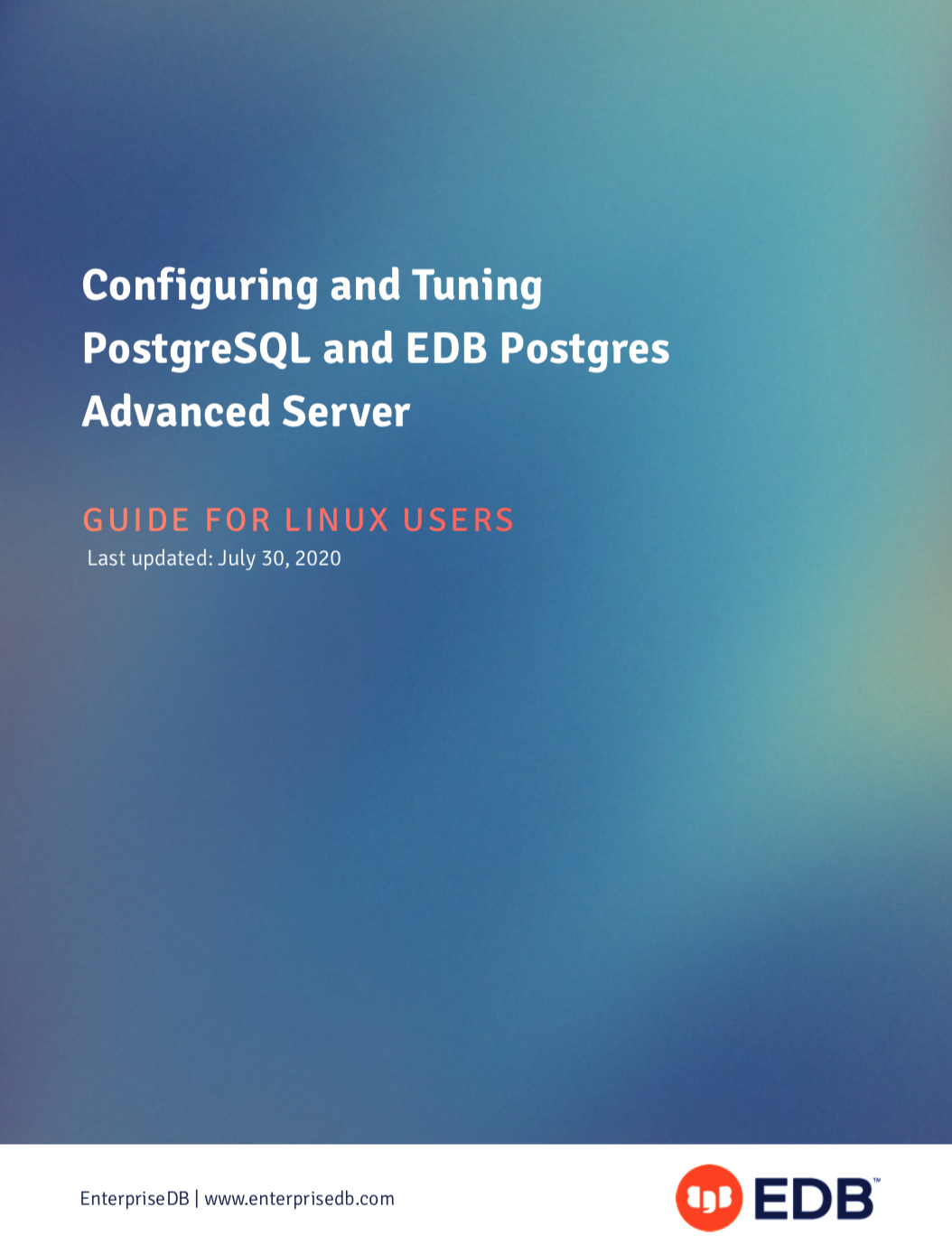

- OPENZFS POSTGRES TUNING RECOMMENDATIONS MAC OS
- OPENZFS POSTGRES TUNING RECOMMENDATIONS UPDATE
- OPENZFS POSTGRES TUNING RECOMMENDATIONS VERIFICATION
All storage in a zpool is shared, and you can grow and shrink the pool automatically on demand. ZFS is based on a pooled storage architecture that makes traditional volumes obsolete. By continuously creating, transfering and restoring snapshots you can create synchronization and redundancy between two or more machines. ZFS snapshots can be created, cloned, backed up and rolled back to. A snapshot initially consumes no disk space, and only starts taking additional storage pool space by continuing to refecence the old data once you start making changes to the filesystem.

Snapshot is a read-only copy of a ZFS filesystem taken at a moment in time that tracks filesystem changes. This makes it possible for ZFS to find any complete blocks written to an incorrect locations, and improve data integrity.Įven more, if you have any type of redundancy – mirror or any type of zraid – on your ZFS filesystem, ZFS will not only detect corrupted data, but also self-heal by fetching the correct data from another location.
OPENZFS POSTGRES TUNING RECOMMENDATIONS VERIFICATION
While traditional filesystems may use checksum verification on a per-block basis, ZFS checksum algorithm works on a filesystem layer. Using LZ4 compression is recommended for nearly any use case of ZFS, since the possible CPU overhead is relatively low when compared with potential LZ4 compression gains.

ZFS filesystem supports built-in compression on a zpool layer to save disk space and reduce file read time. As the ARC algorithm is much less trivial, it typically ensures an increased number of cache hits. In addition to saving the most recently used data, which most operating systems do, ARC also weights the data by how frequently it is being used and stores it in RAM. Rather than relying on your operating system‘s page cache ZFS has a separate caching mechanism.
OPENZFS POSTGRES TUNING RECOMMENDATIONS UPDATE
As metadata update is performed in a single operation, your system may crash in the middle of the writing process and still maintain filesystem consistency leaving you either with the old, or with the new version of a file. In contrast to a traditional filesystem, every time you modify a file ZFS writes new blocks to the filesystem and, when the writing is done, ZFS updates the file‘s metadata pointers to unlink the old blocks and link to the new blocks of data. For instance, the default block size of PostgreSQL is 8 kilobytes, so fetching bigger blocks from the file system may be a waste of disk bandwidth. While changing the block size will have an effect on new files only, it can have a performance impact depending on your application. The default block size of ZFS is 128 kilobytes, but you may change it anytime. Even more, such deduplication granularity ensures that if you have a file consisting of several data blocks and you try to save the same file with a single byte changed, only this single block with a changed byte will be written on a filesystem. If you try to store the same file to the same zpool twice, only a single file will be stored. ZFS provides deduplication on a data block level. For instance, a theoretical maximum size of a zpool is 256 quadrillion zebibytes (2128 bytes), your zpool can consist of a maximum number of 264 devices, and store files up to 16 exbibytes (264 bytes) large. The maximum storage capacity of ZFS is designed to be so large that it shouldn‘t ever be encountered in practice. Let’s go through some of the benefits of ZFS. It always helps to know how exactly a technology can help you before deciding to use it. ZFS has a gazillion of handy features that make it a distinct file system. In this article we are going to use Ubuntu 22.04 to show how you can set up ZFS for a PostgreSQL database service.
OPENZFS POSTGRES TUNING RECOMMENDATIONS MAC OS
In addition to being a solid choice for many system administration workloads, ZFS is widely accessible on a variety of operating systems, including Linux, FreeBSD, Illumos, Mac OS and Windows. ZFS is unique by its awareness of the underlying structure of the disks, allowing it to grow automatically when adding new disks to the storage pool. Zettabyte File System (ZFS) is a local file system with an integrated volume manager that shines as one of the most robust, scalable, and easy-to-administer file systems available today.


 0 kommentar(er)
0 kommentar(er)
